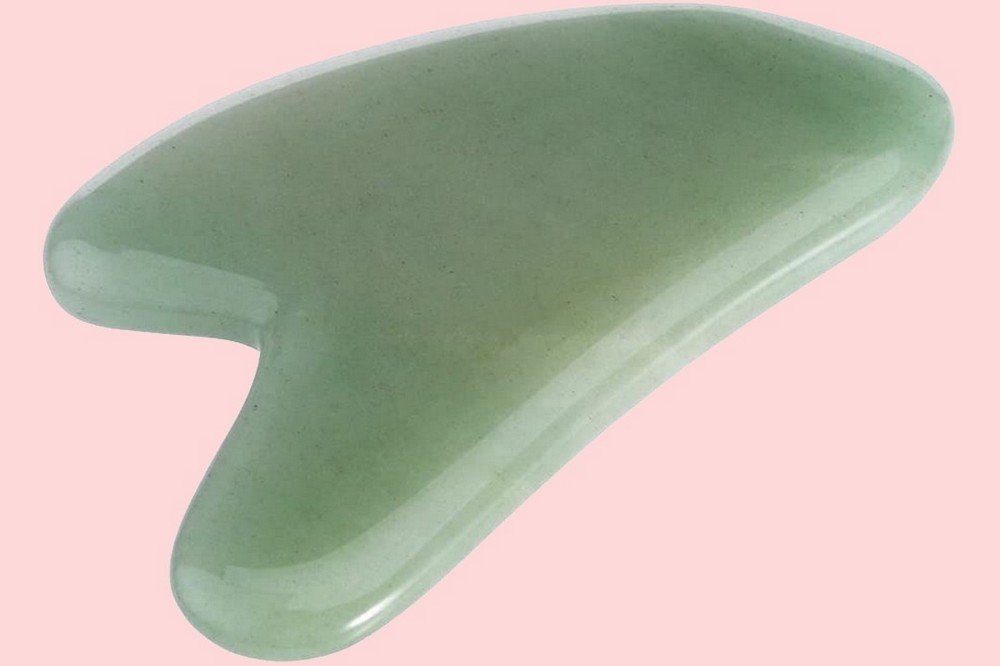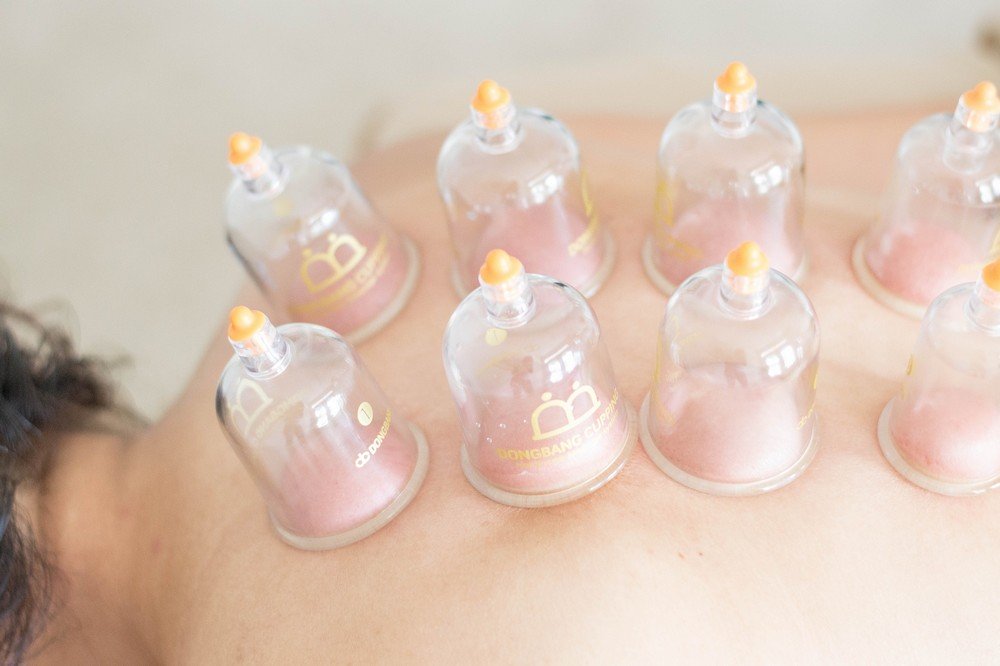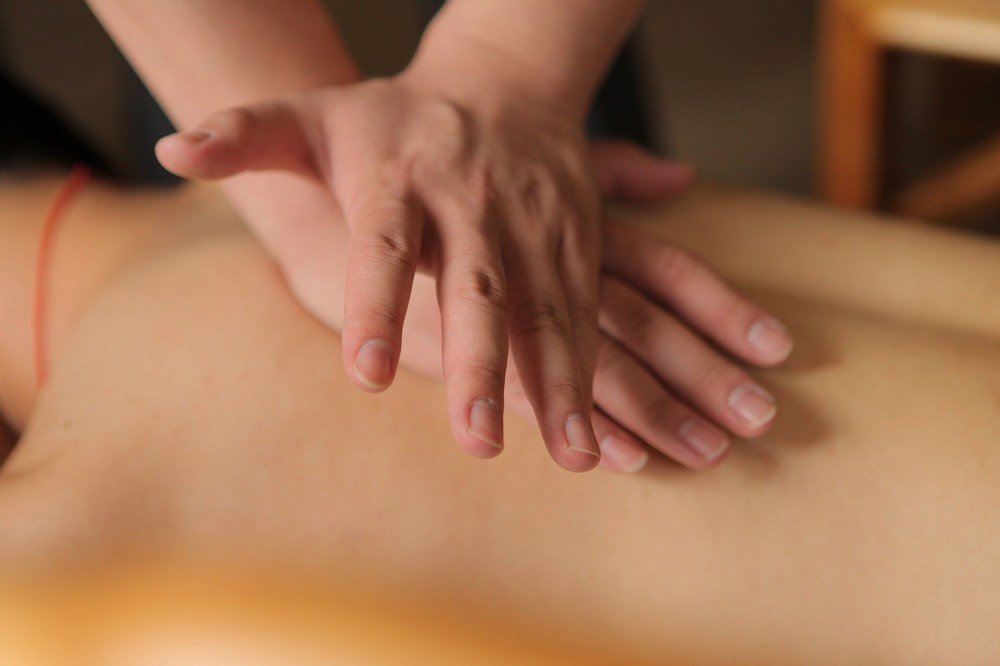Gua Sha for Fibromyalgia
How Gua Sha for Fibromyalgia Pain, Fatigue and Depression
works along with other Traditional Chinese Medicine (TCM) Massage Techniques of
Fire Cupping & Tui na massage.
Chinese Massage Gua Sha for Fibromyalgia

Gua Sha is a Traditional Chinese Medicine method of using a tool to scrape or rub along the skin to relieve pain and release tension in painful fascia, connective tissues and stiff muscles. Gua Sha is also used to break down scar tissue to enable joints to move freely. Having a Gua Sha treatment may cause light bruising along the skin.
The tool itself is normally shaped from green Jade but you can buy Rose Quartz or other types of stones from Amazon.
Chinese Massage Cupping Therapy for Fibromyalgia

Cupping massage is an integral part of Traditional Chinese Medicine. Cupping practitioners place warmed or heated glass, plastic or silicone cups onto the skin and a vacuum is formed allowing the skin to be lifted from the fascia tissues. Cupping is traditionally used for muscle and joint pain, skin conditions and respiratory problems. It is also helps with anxiety and depression.
There have been studies on the effects of cupping on people with Fibromyalgia including Medicinal Cupping Therapy in 30 patients with Fibromyalgia.
The aim of the study was to evaluate the therapeutic effect of traditional medicinal cupping for treatment of Fibromyalgia.
The study concluded that “Medicinal cupping therapy was associated with a reduction in Fibromyalgia symptoms for both pain ratings and number of tender points.”
You can read more about Cupping Therapy and how it helped me overcome many of my Fibromyalgia symptoms and led me to become medication free, pain free, and chronic fatigue free.
Chinese Massage Tui Na for Fibromyalgia

Tui Na massage or Chinese massage relieves pain and releases stress by the pressure applied to the acupressure points, meridians, muscles and nerves.
I’ve already written about the Chinese massage technique of Tui Na and how it helped me overcome many of my Fibromyalgia symptoms including chronic pain, chronic fatigue and crippling depression. You can read more about Tui Na and how it helped me.
More on Tui Na Massage for Fibromyalgia
Tui Na massage, also known as Tuina, is an ancient Chinese therapeutic practice that has a history spanning over 5,000 years. The term "Tui Na" translates to "push and grasp," accurately reflecting the techniques involved in this healing form of massage. It is highly regarded for its ability to address blockages, alleviate pain, and release stress, making it a valuable therapeutic modality.
During a Tui Na massage session, the recipient typically remains fully clothed or draped with a thin cloth. The skilled Tui Na practitioner employs a range of hands-on techniques, including kneading, grasping, twisting, tapping, pressing, and shaking. These manipulations are specifically designed to stimulate the body's energy channels, release tension, and restore the harmonious flow of qi (energy) throughout the body. As a result, Tui Na massage not only provides pain relief but also promotes overall relaxation and revitalization.
One of the remarkable aspects of Tui Na massage is its versatility in treating various ailments. It can be applied to individuals of all ages, ranging from young children to frail and elderly individuals. This adaptability showcases its efficacy and safety across different populations. Whether the purpose is to address musculoskeletal discomfort, relieve digestive issues, enhance circulation, or promote general well-being, Tui Na massage offers a holistic approach to healing.
For infants and children, Tui Na massage can be utilized to soothe common childhood conditions such as colic, constipation, or restlessness. Its gentle and nurturing techniques can provide relief and promote healthy development. Moreover, Tui Na massage is gentle enough to be used on older adults who may have more delicate bodies or conditions associated with aging, such as arthritis or reduced mobility. It offers a gentle yet effective approach to promoting comfort and alleviating pain.
In summary, Tui Na massage, with its "push and grasp" techniques, has stood the test of time as an effective healing and therapeutic practice. Its ability to address blockages, relieve pain, and release stress makes it a sought-after modality for people of all ages and conditions. Whether it's the relaxing and energizing effects or the wide range of ailments it can address, Tui Na massage continues to be valued as a comprehensive approach to promoting health and well-being.
My Experience of Gua Sha for Fibromyalgia Pain
I first stumbled across the power of Gua Sha while watching a couple of YouTube videos for facial massage. The skin on my ageing skin was puffy, sagging and unattractive. My Fibromyalgia had taken its toll all over my body, including my face. I immediately sent for a very inexpensive facial Gua Sha tool from Amazon and began treating my face daily. The results amazed me, lifted my spirits and made me feel better about myself.
But it was while seeking a myofascial release treatment from a Physiotherapist to help me with the very painful fascia and tight muscles throughout my body that I was to find how effective Gua Sha for Fibromyalgia can be. Along with standard massage techniques my Physiotherapist used a large Gua Sha tool to scrape up and down my legs, on my back, neck and shoulders and arms. I’ve got to say that it hurt like hell while having the treatment but the results were amazing. After many treatments all my pains began to disappear.
As with other forms of Chinese massage techniques the aim of Gua Sha is to enable the free flow blood and Qi around the body. Blocked, stuck or stagnant Qi causes the tension and pain of Fibromyalgia in the muscles, connective tissues and fascia.